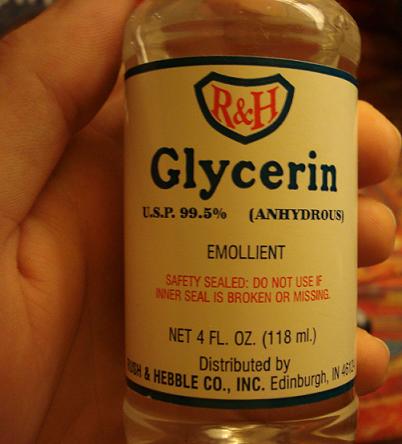
denatured - 8-3-2008 at 07:02
Hello
Is there another method of making glycerol beside saponifying vegatable oils (or fat) and then salting?
That method isn't good because the yield is hydrated and it is needed in the anhydrous form.
I looked in Vogel's book but couldn't find it, don't know why it isn't talked about 
not_important - 8-3-2008 at 07:55
It can be done, but it is tedious and the product is not anhydrous. Methods include preparing allyl chloride from radical chlorination of propylene.
converting that to the ephichlorohydrin, and hydrolysing that with dilute sodium carbonate; after that concentrating the aqueous solution, steam
distilling under reduced pressure, and then dehydrating the glycerol.
Try using azeotropic distillation of ordinary glycerol with toluene or a C6 to C8 alkane (hexane, heptane, petroleum ether) to remove the water. If
it is for food or similar purposes there is no reason to make it fully anhydrous, just removing water under a vacuum will do the job.
MagicJigPipe - 9-3-2008 at 01:19
In case you didn't know already, supposedly anhydrous glycerol can be obtained from many drug stores in the US. I have a bottle right now that I
bought from USA Drug that claims to be anhydrous 99.5% USP grade.
Now, what worries me is if the .5% isn't water then what the hell is it? Still, it's pure enough (albeit expensive because it must be purchased in
small quantities) for many applications.

denatured - 9-3-2008 at 04:00
@not important: thank you for that method, do you have a detailed description for it?
it is for a project (we choose something to produce, make a budget, see if it will be profitable, what is needed..etc.).. it is supposed to be pure
enough for medical analysis labs..do you think starting from normal glycerol would be a good idea money-wise..
@MagicJigPipe: i think it is water.. they just consider 99.5 as water free..
not_important - 9-3-2008 at 05:16
Given that you can by USP-NF-FCC grade glycerol, which is medical grade, purchasing that makes for a very simple process and project.
Some of the public domain pre-1930 industrial chemical technology books may have reasonably detailed descriptions of making and processing glycerol.
The newer, non-public domain books would likely address the route from propane/propene.
These days glycerol is more likely to be a byproduct of biodiesel, there is much research and a number of papers on purifying glycerol from that
source. Some searching on the Web should give you a number of documents.
SFAIK the allowable non-glycerol parts of the 99+ percent product are water, small amounts of 1,3-propanediol from bacterial fermentation of glycerol
that took place in the oils before processing, and tiny traces of fatty acids, oils, and mono and di glycerides. It's not easy to separate the 1,3
diol from the glycerol, it's presence was discovered during WW-I when some lots of glycerol gave low yields of nitroglycerin. It is considered as
safe as glycerol, being a slightly better solvent for some organics.
MagicJigPipe - 9-3-2008 at 08:49
Notimportant, I understand that's the case with regular 99% gylcerol but do you think my ANHYDROUS glycerol is HYDROUS? I just don't understand how
they can legally (or morally for that matter) call it anhydrous if it contains water, you know? That's bullshit! It angers me greatly.
Also, if you're going to make glycerol and your application requires it to be at least USP there are many regulations and procedures you must follow
to make sure of and determine the purity of your product. I don't think that would be cost effective at lab scale.
[Edited on 9-3-2008 by MagicJigPipe]

